
Ai LTx Camshafts
- Ai Billet Steel LTx Cams - Cost: $445 - cam only, discounted to $395 when purchased with head work
Ai One-Off Custom Firing Order Grind - Cost $895 - hydraulic or solid roller billet LTx 4/7 swap or LS firing order cams
Click Here for a list of our $445 HR LTx Grinds
 |
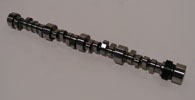 |
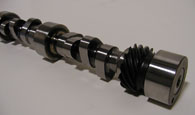 |
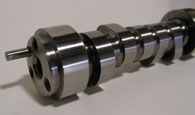 |
Why run an Ai grind?
Precision, quality control, and consistency are the most common factors that set our machine work apart. That commitment to quality directly carries over to our camshafts and valve train. It does not require a great deal of research to realize many camshaft sources are selling the same camshaft grinds. This is so prevalent that they are often masked by marketing names (e.g. "SuperAwesomeCam v1.7"). While that approach and cam will certainly work and satisfy many, it is an enthusiast level approach and product. Consistent with our approach to machine work, we provide a professional competition level of expertise and quality control as it pertains to camshafts.
Enthusiasts, racers, and professionals all enjoy discussion pertaining to the technical aspects of this topic. Due to the inclusiveness of today's message board driven sales, presenting simplistic qualitative talking points in place of quantitative analysis is a common marketing strategy. You will find no shortage of experts facilitating this strategy by directing your attention to specific specifications, purported characteristics, and esoteric calculations. This often serves to misdirect your attention from the qualities that have an appreciable effect on the outcome of your project. As with bench racing marketing data like flow #'s, if you are focused on the wrong questions the message board experts need not know the correct answers.
Data, Consistency, and Quality Control - precisely the same aspects that ultimately make the difference between good and great when comparing any machined component. In manufacturing, it is expensive to continually maintain machines and tooling such that their output is dimensionally consistent. With a large proportion of the buying public fixated on price, and the majority of camshaft sellers performing no QC of any kind, there is little incentive for the grinder to produce a consistent camshaft. After years of supplying camshafts for public and private label it has been our experience that a majority do not realize the extent to which most cams sold deviate from the claimed or intended specifications. It is normal for after market cams to deviate +/- 3°, with many 4-5° off of the stated spec.
Camshaft Myth & Marketing vs. Reality
Enthusiasts, racers, and professionals all enjoy discussion pertaining to the technical aspects of this topic. Due to the inclusiveness of today's message board driven sales, presenting simplistic qualitative talking points in place of quantitative analysis is a common marketing strategy. You will find no shortage of experts facilitating this strategy by directing your attention to specific specifications, purported characteristics, and esoteric calculations. This often serves to misdirect your attention from the qualities that have an appreciable effect on the outcome of your project. As with bench racing marketing data like flow #'s, if you are focused on the wrong questions the message board experts need not know the correct answers.
- Common marketing misdirection and fruitless (for the end user) talking points:
- New vs. old "Lobe Technology"
- Dynamic Compression Ratio ("DCR")
- Subjective qualities (e.g. loping, valve train noise)
- Assertion that X valve event must occur at precisely X degree ideally
- Assertion that one aspect of a lobe form is "the secret" or most important characteristic.
If the commonly discussed aspects are not particularly useful to the end user, then what exactly is?
Data, Consistency, and Quality Control - precisely the same aspects that ultimately make the difference between good and great when comparing any machined component. In manufacturing, it is expensive to continually maintain machines and tooling such that their output is dimensionally consistent. With a large proportion of the buying public fixated on price, and the majority of camshaft sellers performing no QC of any kind, there is little incentive for the grinder to produce a consistent camshaft. After years of supplying camshafts for public and private label it has been our experience that a majority do not realize the extent to which most cams sold deviate from the claimed or intended specifications. It is normal for after market cams to deviate +/- 3°, with many 4-5° off of the stated spec.
- The value of Quality Control - "Quality Control, Quality Certification, QC, etc." simply means that a part is subject to physical examination. Every single Ai camshaft is subject to our in house inspection on our own cam measuring system. The individual cam's dimensional values are then compared to both the intended values and the allowable deviation (tolerance) limit. Consider for a moment that a +/- tolerance implies that your area of uncertainty is twice the possible deviation. The reality of the typical inconsistency of after market camshafts invalidates several of the aforementioned presumptions many are led to focus on. While discussions often gravitate around the theoretical differences between 113° LSA & 113.5° LSA, or just how critical it is that you have a very specific "Dynamic" Compression Ratio, the typical inconsistency of most cam grinds ensures the theory is rarely brought to fruition.
- Example: The average 226°/230° 112°+2° Advance camshaft will typically be somewhere between 223-229° / 227-233° & 108-112° Intake Center Line / 112-116° Exhaust Center Line. Assume the original design typically produces ~.070" Intake Piston to Valve Clearance (P2V). The typical +/- 2° on lobe center lines alone means that your .070" Intake P2V is actually somewhere between .045-.095" with most lobe styles. This ignores the common +/- 2° deviation of not only the lobes themselves, but cylinder to cylinder variances which further stack tolerances to compound the area of uncertainty.
At this point the inherent value of knowing precisely what your individual cam is should be readily apparent. Endless machinations over the theoretical ideal valve event, "Dynamic" compression, or minute variances in duration are clearly futile when the typical variances in the average cam are taken into consideration. Furthermore, these topics ignore the single most important concern that does have an appreciable affect on your project - Will the cam actually fit in your engine? With our 100% QC on camshafts we can definitively answer that question.
- The value of Consistency - Consistent cam grinds are more the product of our uncompromising standards and 100% in house QC than a product of any specific grinder insofar as the end user is concerned. Utilizing many grinders from all over the country due to varied specialities, we have learned that every cam grinder will produce cams that are off spec. The question is then: How often, and how far off? Purchasing the average cam online leaves one with several concerns:
- Will my individual cam force me to machine valve reliefs to retain adequate P2V clearance?
- Will my individual cam be similar or the same as the one utilized in the result that compelled me to purchase it?
- Will I incur added expense during installation via having to purchase an adjustable timing set and pay for a professional to degree it to either maximize clearance or install it on the center lines it should have been on in the first place?
As previously mentioned, our 100% QC affords us the knowledge of what each individual camshaft precisely is. While that is of enormous benefit to each individual application, it does not necessarily aid the guy currently shopping for a camshaft. That is where our unmatched consistency comes into play. Unlike most, we routinely reject a large percentage of the camshafts we inspect due to the aforementioned deviations. Our insistence that our camshafts be within 2° of the intended design provides unmatched consistency and entirely alleviates the common concerns listed above. The end user can rest assured that between our QC and tolerances, his Ai camshaft will have the same performance potential and available P2V as others before him.
- The value of Data - In short: It is critical to know what you are selling. Many who have done online research on cam design are led to believe that selecting a camshaft requires some form of secret knowledge that only a few possess. The irony is that many cams are sold by those who have no more knowledge of the characteristics of the grind they are providing than the enthusiast purchasing it. The market is often captivated by claims that a new "cam of the week" is superior to those which preceded it. To drive this home the market is often offered a range of claims; typically along the lines of:
- Cam of the Week employs New Technology!
- Cam of the Week is easier on parts than previous contenders!
- Cam of the Week is superior because its designers focused on a new lobe characteristic - the secret to great cams!
A dose of reality - Camshaft lobe designs are generally broken down into several areas of the lobe (e.g. above/below lash point, initial opening, approaching reversing direction, seating, etc.), and are described by several characteristics beyond duration at various tappet lifts. The most common four are:
- Lift - Displacement
- Velocity - Rate of change (derivative) of Lift
- Acceleration - Rate of change (derivative) of Velocity
- Jerk - Rate of change (derivative) of Acceleration
Graphical Representation (Lift = Blue, Velocity = Green, Acceleration = Cyan, Jerk = Red):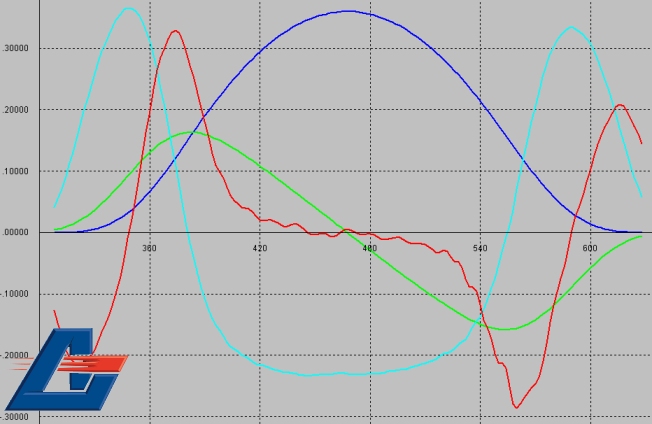
The reality of camshafts is that there is no magic or knowledge of a secret characteristic that will make one design better or worse than another in an absolute sense. Due to a wide range of variable values in seemingly similar applications, cams must simply be appropriate for an individual application. Camshafts are not run by themselves; they are run in systems.
- The "New Technology" Myth - Often, camshaft or lobe series releases are accompanied by claims that they are the product of technological breakthrough. With rapid advancement in many areas of our lives, it is understandable that the studied consumer would be inclined to believe this claim is not only reasonable, but would be a necessity for designs to be improved.
However, several facts undermine the significance of this assertion. Notably, the reality that leading edge cam & valve train design software still employ decades old mathematic formulas. This should come as no surprise considering man has been utilizing cam actuation for centuries. Beyond this, aside from moving to a different valve train arrangement (e.g. OHC), the variables in play (not the values) typically remain very similar for a given style of valve train. Lobe design alterations are precipitated by changes in those variable values such as reciprocating mass, lifter characteristics, and camshaft base circle radius. As we progress we are refining designs rather than revolutionizing them.
- The "Easy/Hard on parts" Generality - Many cam grinds are said to be easy or hard on parts to appeal to those who realize reliability is of the utmost importance. The issue is that when the effects of a given design are simplified to the extent that the relative level of aggression is described as either "easy" or "hard," and the assembly of valve train components reduced to "parts," we dilute the usefulness of the statement. As the cam actuates several linked components, it stands to reason that the multitude of valve train variables and lobe characteristics would have varied affects on associated parts such as lifters, rockers, valves, and valve springs.
There is a never ending struggle to provide the power potential of large aggressive lobes while retaining drivability. This has spawned lobe designs that, while they may provide a minute improvement in performance, often do so via significantly increasing stresses on one or more components in the system. This approach may be entirely acceptable in one application, and a recipe for disaster in another. In a market dominated by a focus on short term power gains, rarely are the affects on spring longevity, valve/rocker/lifter stresses, or RPM headroom beyond peak power discussed. Assuming defined associated component parameters, we can employ various lobe designs or styles to minimize or maximize their effect on specific components. Camshaft selection is about compromise - there is no free lunch.
- The "Cam Secret" Myth - These claims are some of the easiest to deflate. Marketing campaigns often assert that a focus on a single one of the aforementioned lobe characteristics (i.e. Lift, Velocity, Acceleration, & Jerk) is "the secret to supreme cam design." These claims often have their irrationality compounded by explanations implying that the ideal limit of the parameter is absolute - stating that "the secret" is to either minimize or maximize the value of the characteristic. Our contention is simple: Seeking "ideal" characteristics can only be achieved on a per application basis with an acceptance that none can be focused on to the exclusion of others, because all of the characteristics are inseparably connected to one another.
Practical Application - Employing leading valve train design & simulation software in conjunction with our in house QC on 100% of our cams translates directly into tangible gains for everyone from the enthusiast to the professional racer. Having both developed our own proprietary designs, and digitized the majority of common lobes from cam grinders both popular and obscure, we have an unprecedented amount of options to exploit for your benefit. With an Ai camshaft you can be assured that:
- Your individual camshaft has been thoroughly inspected & measured in house.
- Your individual camshaft exhibits performance potential identical to others of the same grind.
- Your individual camshaft meets the most stringent tolerances demanded in the late model market.
- Your individual camshaft is appropriate for your specific application and associated components.
- Your individual camshaft will install without requiring adjustable timing sets to install properly.
All Ai camshafts ship with the actual inspection report for that individual camshaft.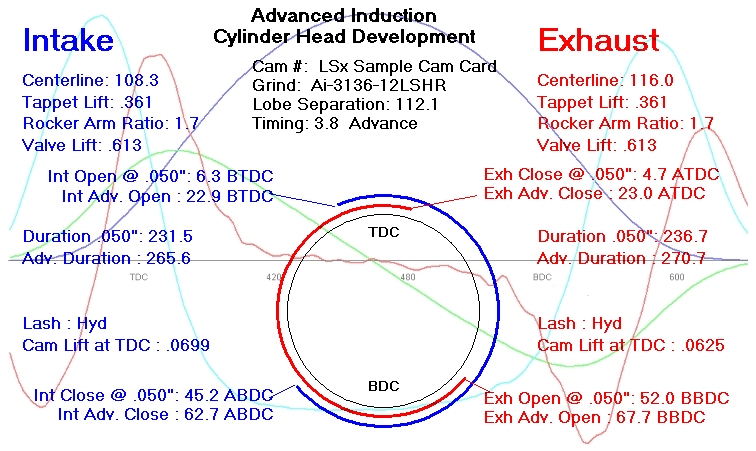
Please Contact Us for shipping & turnaround quotes!